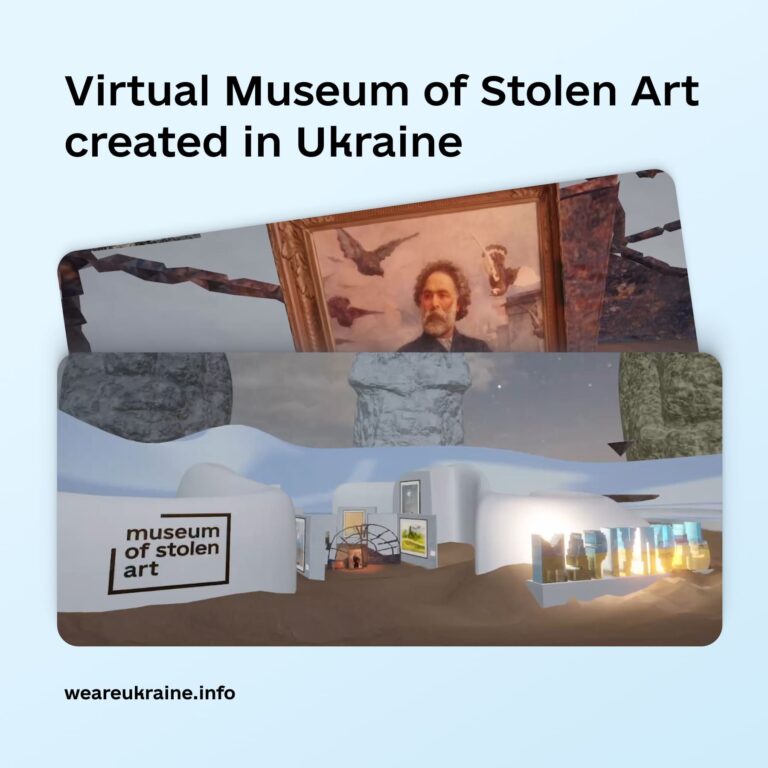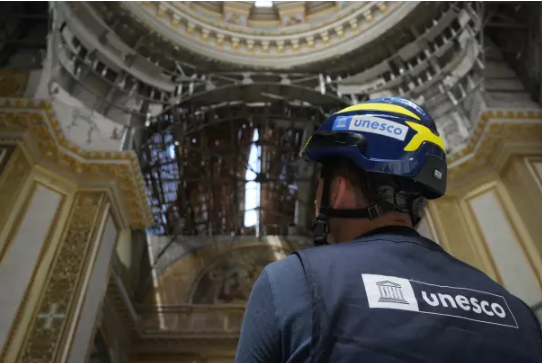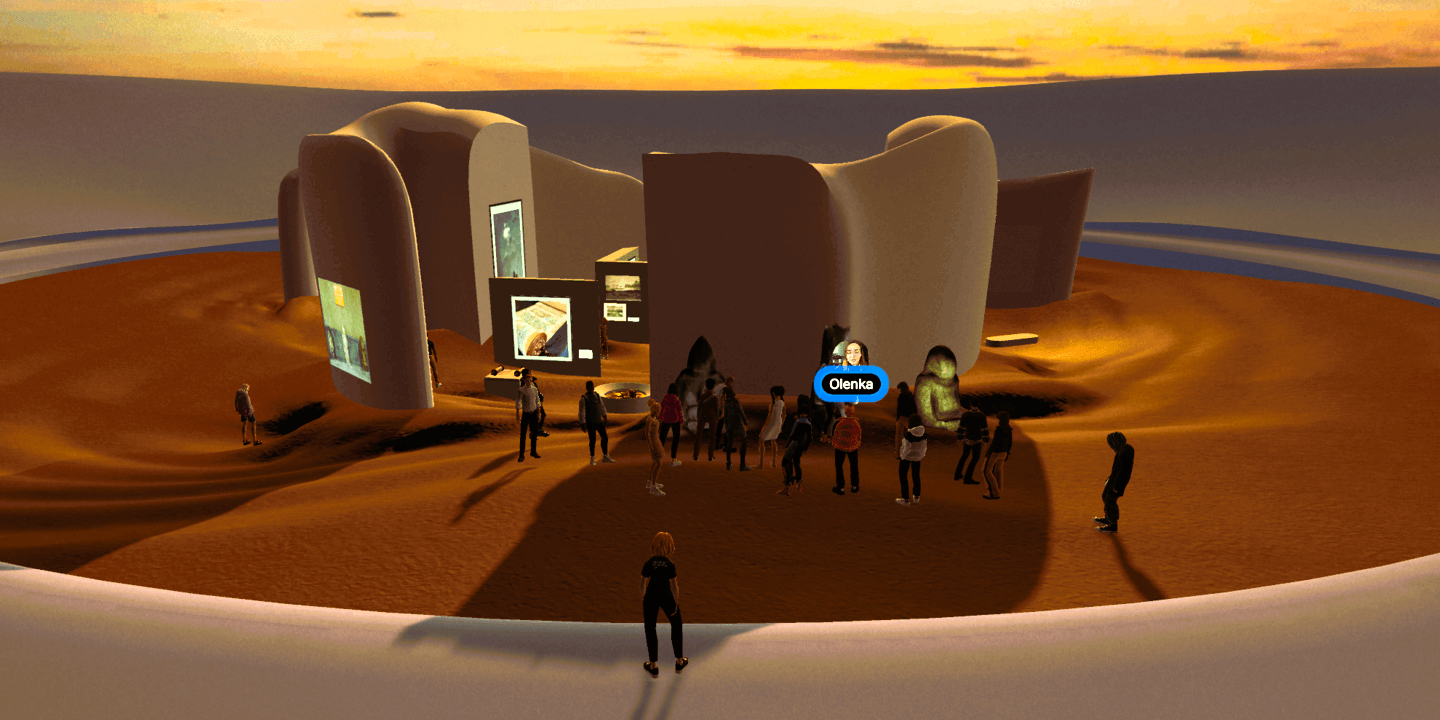Amid the overwhelming news about human atrocities, the war's impact on cultural heritage often remains underreported. Only much later, in peacetime after war, objects, and artefacts taken by theft or coercion are contested and debated as nations struggle with documentation and evidence of the acquisition.
The Museum of Stolen Art is a digital space set up in the Metaverse by a group of Ukrainian Cultural workers to document stolen, disappeared or damaged artefacts. The project is a collaborative effort involving art directors, creative leads, 3D designers, copywriters, PR and communication professionals, and project managers. At the heart of the initiative is a team of creative minds like Olena Zenchenko and Les Yakymchuk.
Its innovative approach involves piecing together fragmented information from various sources—social media videos, expert consultations, and even hostile media outlets—to recreate digital copies of artworks that have vanished from physical spaces. The team used OSINT (open source intelligence) methods to identify the stolen items. This was a challenging task given the lack of available information.
"This is not just an archive of stolen works but an artistic reimagining of the crime committed by Russia against the Ukrainian people," said Les Yakymchuk, co-founder and creative leader of Linza agency.

Photo: a shot of the museum, including a self-portrait of Arkhip Kuindzhi, stolen from the Arkhip Kuindzhi museum. Photo Credit: We are Ukraine.
This meticulous process is akin to a modern-day archaeological dig, revealing not just the physical loss but also the emotional resonance these works held within Ukrainian society. By visiting the dedicated project website, visitors are transported to a captivating metaverse experience that allows them to engage with artworks as if they were wandering through an actual museum.
For instance, among the stolen treasures are works by renowned Ukrainian artists like Arkhip Kuindzhi and Ivan Aivazovsky, whose paintings were not merely aesthetic objects but embodiments of national pride and identity.
The Museum contains digital copies of objects of Mariupol's cultural heritage. Visitors can interact with archaeological finds, objects of folk life of representatives of local cultures, monumental works, visual arts, architectural monuments and memorials.
Beyond Preservation: Reclaiming National Identity
Since the onset of the invasion on February 24, 2022, Ukraine has witnessed an unprecedented assault on its cultural heritage. Reports indicate that over 480,000 pieces of art have been stolen or destroyed, with entire collections from museums in cities like Mariupol and Kherson wiped clean. On one occasion, Alina Dotsenko director of the Kherson Art Museum told the Art Newspaper that out of 14.000 pieces of Art, 10.000 had been stolen by the invading forces, to “preserve” them.
According to the Ukrainian Ministry of Culture, collections from 40 Ukrainian museums have been stolen or destroyed. UNESCO has reported that 451 cultural sites have been damaged. By stripping Ukrainians of their cultural assets, Russia is not merely committing an act of aggression; it is attempting to erase the very essence of Ukraine, fostering historical myths surrounding the notion of a "greater motherland."

©UNESCO/Taras Osipov
‘We're grateful for the opportunity to showcase how digital platforms are helping to preserve and advocate for the return of Ukraine's stolen cultural heritage’ said the art director of the project, Olenka Zenchenko in a statement. Digital tracking via satellite imaging has been used by UNESCO since 2003 to trace the damage done to important cultural heritage. These methods have already been used in Ukraine and, more recently, Gaza, to compile a repository of the extent of the damage. Digitising artwork in times of conflict and political unrest could extend to other countries undergoing warfare and political unrest.
Mariopul was the first digital museum piloted for the showcasing of stolen art. The museum plans to expand its virtual galleries to include objects from other Ukrainian regions affected by the Russian invasion, such as Kherson, Sumy, Chernihiv, Kharkiv, Donetsk, Luhansk, and Crimea.










